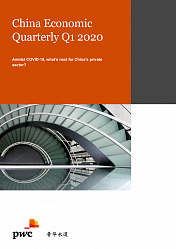THE ROLE AND PLACE OF RUSSIA AND CHINA IN MUTUAL TRADE
China’s role as a trading partner has increased manifold in recent decades, especially as a supplier: from 5% of imports in 2002, it will account for 25% by 2021. The systematic increase in both imports and exports in the light of Russia’s current major restructuring of its foreign trade gives every reason to predict a further expansion of China’s presence.
STRUCTURE OF RUSSIA’S EXPORT TO CHINA
China is the largest consumer of Russian energy resources. In the structure of Russia’s exports to China, goods in FEACN Group 27 (oil, petroleum products, gas, hard coal, lignite, etc.) account for 68% in value and 78% in quantity. The physical trade flow of Russian energy resources to China is steadily expanding. While fuel exports (Group 27) stood at 5.3 million tons in 2002, it rose to 36.1 million in 2011 and will reach 137.8 million by 2021.
CHINA’S EXPORT PROSPECTS AND DEMAND TRENDS
China, being the world’s leading economy, is already today Russia’s largest trading partner. In February 2022, the Russia-China summit in Beijing resulted in adoption of a Roadmap for the High-Quality Development of Russia-China Trade in Goods and Services.
According to the Plan for Increasing Russia’s Exports of Goods and Services to China, it should reach USD 107 billion by 2024. The growth will reach 50% against the 2021 level, in which exports of goods and services amounted to about USD 71.2 billion. To implement the Plan, Russia must ensure that its total exports of goods and services to China increase by an average of 15% a year.
TRADE POTENTIAL OF DEVELOPING EURASIAN TRANSPORT CORRIDORS
An important part of the Silk Road Economic Belt is the transport corridor through Russia and Kazakhstan. For Russia, in addition to expanding transit, localizing industry along trans-Eurasian transport corridors, and strengthening the connectivity of inland states and regions, the development of land transport infrastructure will significantly reduce the time and cost of delivering exports to China, particularly from central regions and Western Siberia.
Logistics optimization plays a key role in the further expansion of Russia’s exports to China. Most notably, there is a need to develop existing modes of delivery from the central regions of Russia and Western Siberia to provinces of Central and Western China. The infrastructure for new rail delivery routes via Kazakhstan is currently being set up. The attractiveness of realizing the Northern Sea Route as part of the Ice Silk Road and the need to link it to existing Eurasian land routes opens up considerable space for collaboration between Russia and China in the coming decades.



